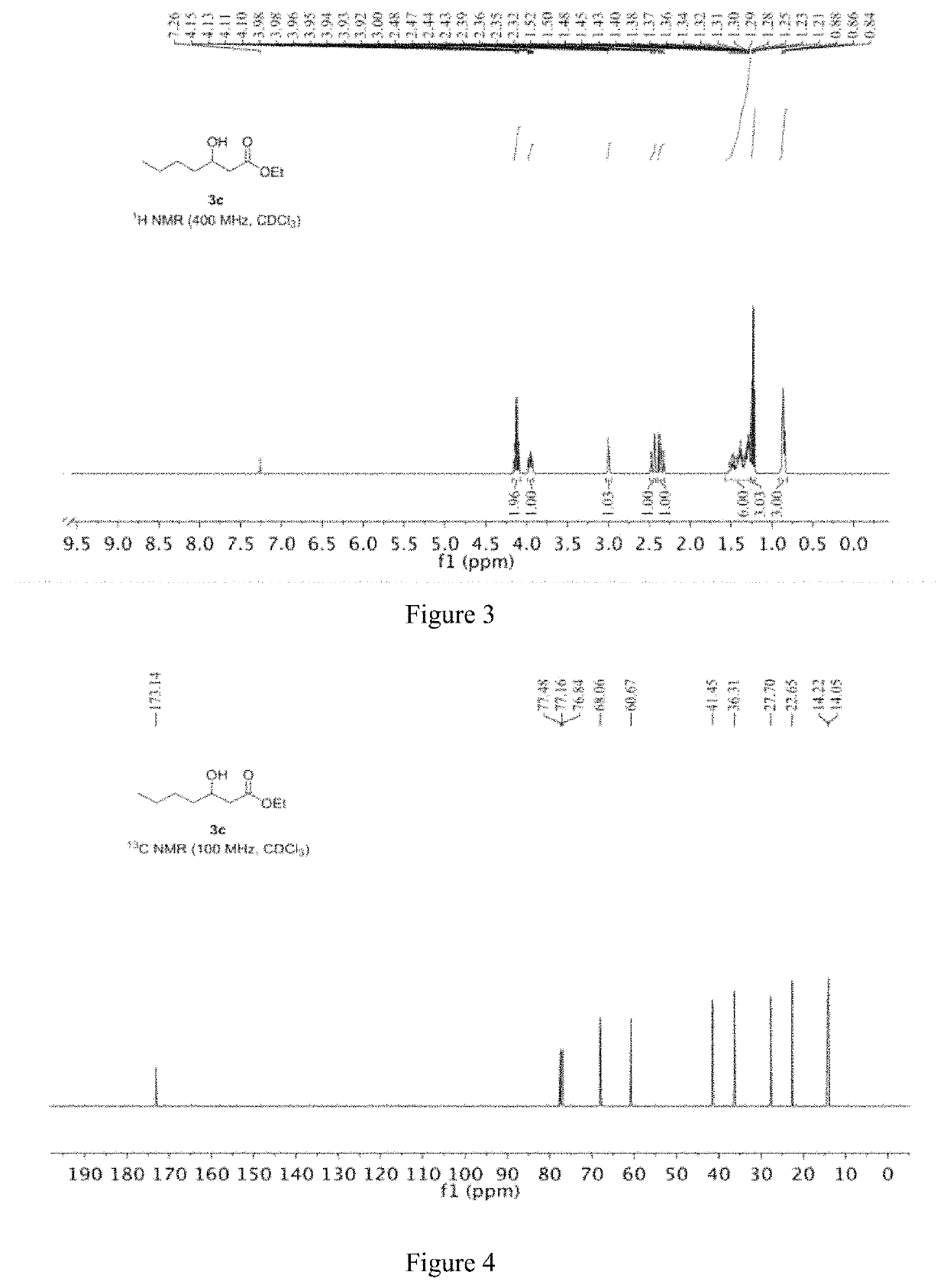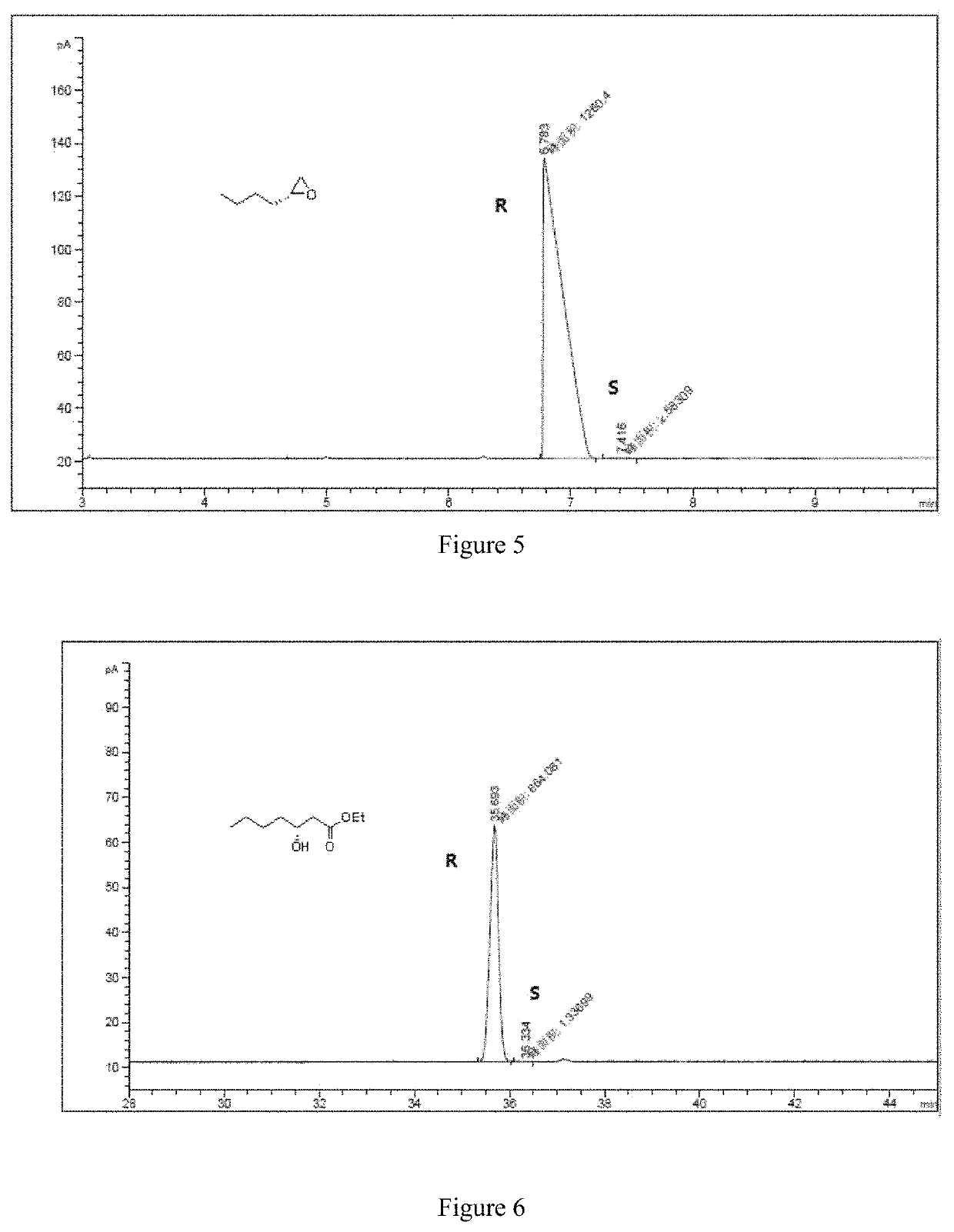Method for preparing a β-hydroxycarboxylic acid ester
a technology of hydroxycarboxylic acid and ester, which is applied in the preparation of ethers, physical/chemical process catalysts, metal/metal-oxide/metal-hydroxide catalysts, etc., can solve the problems of low yield, difficult separation, and low yield, and achieve low cost, high conversion rate, and easy-to-obtain materials
- Summary
- Abstract
- Description
- Claims
- Application Information
AI Technical Summary
Benefits of technology
Problems solved by technology
Method used
Image
Examples
example 1
[0049]The reaction equation of this embodiment is as shown in the following scheme (1):
[0050]
[0051]The specific steps are as follows: 13.11 mg of CoBr2 and 11.17 mg of iron powder are mixed and placed in a reactor; the reactor is filled with nitrogen and vacuumed, and thus repeated three times to obtain a nitrogen atmosphere, and 2 mL of ethanol is added to the reactor. 144.22 mg (2 mmol) of 1,2-butylene oxide and 13.62 mg of piperidine, then replacing the nitrogen in the reactor with carbon monoxide gas, replacing it three times, charging carbon monoxide to 6 MPa, raising the temperature to 60° C., and reacting for 20 hours; After completion, the obtained reaction liquid is subjected to distillation to obtain 269 mg of a product having a content of 99% and a yield of 92%.
[0052]Under the protection of nitrogen, the iron powder is added to the residue, and 2 ml of ethanol and 144.22 mg (2 mmol) of 1,2-butylene oxide are added, and the above-mentioned synthesis operation is repeated, ...
example 2
[0059]Under a nitrogen atmosphere, 5.60 mg of iron powder was added to the residue of Example 1, and then 2 mL of ethanol and 144.22 mg (2 mmol) of 1,2-butylene oxide were added, and the subsequent steps were carried out in accordance with the method of Example 1. Finally, 270.7 mg of product was obtained with a content of 99% and a yield of 92.6%. The obtained product was subjected to the same nuclear magnetic resonance test results as in Example 1.
example 3
[0060]The reaction equation of this embodiment is represented by the following Scheme (2):
[0061]
[0062]The specific steps are as follows: 10.37 mg of CoCl2 and 10.97 mg of manganese powder are placed in the reactor; the reactor is filled with nitrogen and vacuumed, and thus repeated three times to obtain a nitrogen atmosphere, and 2 mL of ethanol and 200 mg are added to the reactor. (2 mmol) R-1,2-epoxyhexane (e.e. value: 99.59%) and 24.69 mg of 3-hydroxypyridine, and then replacing the nitrogen in the reactor with carbon monoxide gas, replacing it three times, and then charging carbon monoxide to 7 MPa. The temperature is raised to 80° C., and the reaction is carried out for 25 hours. After the completion of the reaction, the obtained reaction liquid is subjected to distillation under reduced pressure to give 314 mg of a colorless transparent liquid having a content of 99%, and a yield of 90%.
[0063]The product obtained in this example is characterized by NMR, and the analysis-diagra...
PUM
| Property | Measurement | Unit |
|---|---|---|
| time | aaaaa | aaaaa |
| temperature | aaaaa | aaaaa |
| pressure | aaaaa | aaaaa |
Abstract
Description
Claims
Application Information
 Login to View More
Login to View More - R&D
- Intellectual Property
- Life Sciences
- Materials
- Tech Scout
- Unparalleled Data Quality
- Higher Quality Content
- 60% Fewer Hallucinations
Browse by: Latest US Patents, China's latest patents, Technical Efficacy Thesaurus, Application Domain, Technology Topic, Popular Technical Reports.
© 2025 PatSnap. All rights reserved.Legal|Privacy policy|Modern Slavery Act Transparency Statement|Sitemap|About US| Contact US: help@patsnap.com



